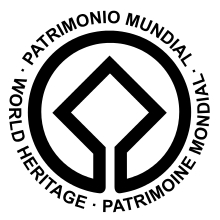yellowstone
a nature paradise
a nature paradise
click on a photo to start
Lightbox, that lets you see the series of photos one after the other in a bigger size, plus legend.
Unforgettable Landscapes
Yellowstone is also a collection of wonderful landscapes, different ecosystems and biotopes, from snowcapped mountains to rich green meadows, waterfalls, canyons, lakes and forests.Continental divide
The Continental Divide runs through Yellowstone, one side feeding the Mississipi and Missouri (and the Gulf of Mexico), the other side providing water for the Snake River, the Columbia River and the Pacific. The Yellowstone River runs from south to north, feeds Yellowstone Lake and leaves it to throw itself through its Upper and Lower Falls and the incredible Grand Canyon of Yellowstone. It continues on and on till it joins the Missouri River near the Canadian border.Right up here on the Divide, little Isa lake sends its water to both oceans. On the West side, it runs into Firehole River, then Madison River, and further North to the Missouri and the Gulf of Mexico (so finally south and east). The eastern outlet of the lake runs into Lewis River, Snake River to Columbia River and the Pacific (in the West). Most of the time, the water of Isa Lake only drips away, but when ice melts in Spring, it's another story.
Snowcapped mountains
The mountains that enclose the Yellowstone Caldera, the giant crater with all its geothermic activity, are part of the Rocky Mountains that run from New Mexico all the way to British Comumbia, almost as far as Alaska. The Grand Tetons are also part of this mountain range.
Lakes, big and small
The largest lake in this region is Yellowstone Lake, 350 sq.km. Though it is huge, it only covers one tenth of the Yellowstone Caldera. In winter, the lake freezes over with an ice crust of almost a meter thick.
Grand Tetons National Park includes several lakes, several of them are the result of glaciers coming down from the Teton mountain range.
From N to S: Jackson Lake, Leigh Lake, Jenny Lake and further south Phelps Lake.
Waterfalls
Again, the most impressive waterfalls are the Yellowstone Upper and Lower Falls. Other falls in the region include Gibbon and Tower Falls (on the road from Madison to Lamar Valley) and the smaller Lewis Falls on the road from Yellowstone to Jackson Lake.
The last photo shows the hot water streaming down into the Firehole River from the Midway Basin.
Yellowstone Canyon
I suppose it's here that the river got its name: Roche jaune or Yellow stone. The colours of this gigantic and deep canyon are just incredible. The soft pastel hues of the rock formations the river has cut itself a way through. Just amazing!By comparison a quick view into Lewis Canyon, all ice and cold.
Geyser and hotspring basins
Smoking rivers
Colourful geology
Volcanic activity often produces colourful geology, rock formations with all kinds of minerals and chemicals that make for unusual formations. Sulfuric of ferriferous stone... almost as beautiful as the colours created by bacteria and algae in the geysers and hotsprings.Lovely valleys
Meandering streams
Little brooks
Undulating landscapes in Utah and Idaho...
Fire on the Mountain
The Yellowstone pages of the National Park Service contain an important chapter about fire. Fire has been a shaping factor in the formation, the geology and ecology of Yellowstone. First of all, there is the presence of the earth's fire right under the surface, but many fires are caused by lightning, and some are the consequence of human inattentiveness (or bad intent).Fire is a natural phenomenon and as such is part of the ecology of the Park. Fires are a means of renewal of nature, cleaning up old organisms to free the organic material they contain for new generations. This is valid for a heath, where the heather plants become wooden and only continue to flourish at their extremes, emprisoning big amounts of organic material that can be used for new vegetation after a fire. Plants and trees have developed means to survive forest fires. Some even need fire to develop. When there are so few new redwood trees in California, this is due to the fact that redwood seeds need some fire in order to be able to germinate. Therefore, it is sound policy of nature reserve and national park management to let naturally caused fires burn and allow renewal of the vegetation.
